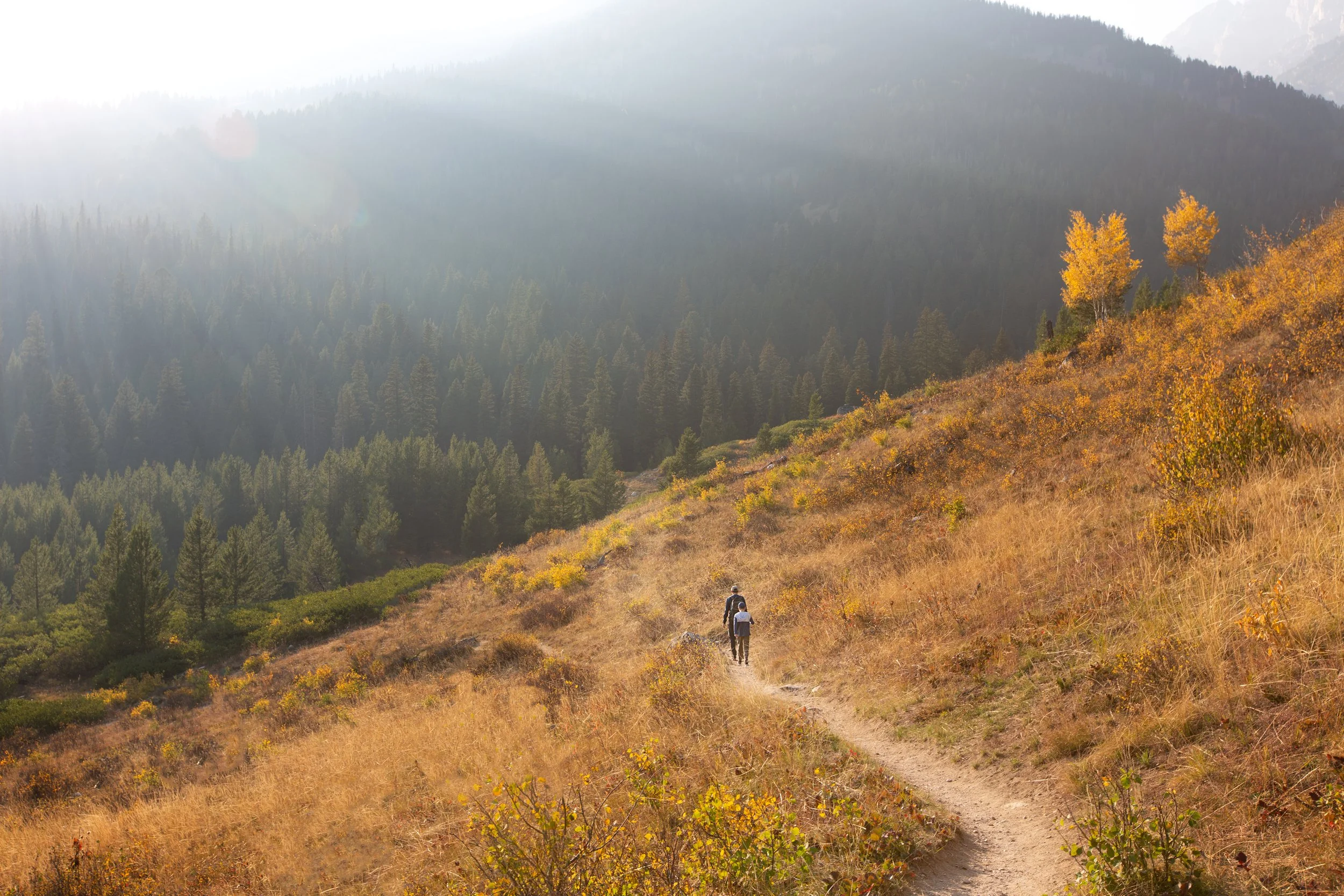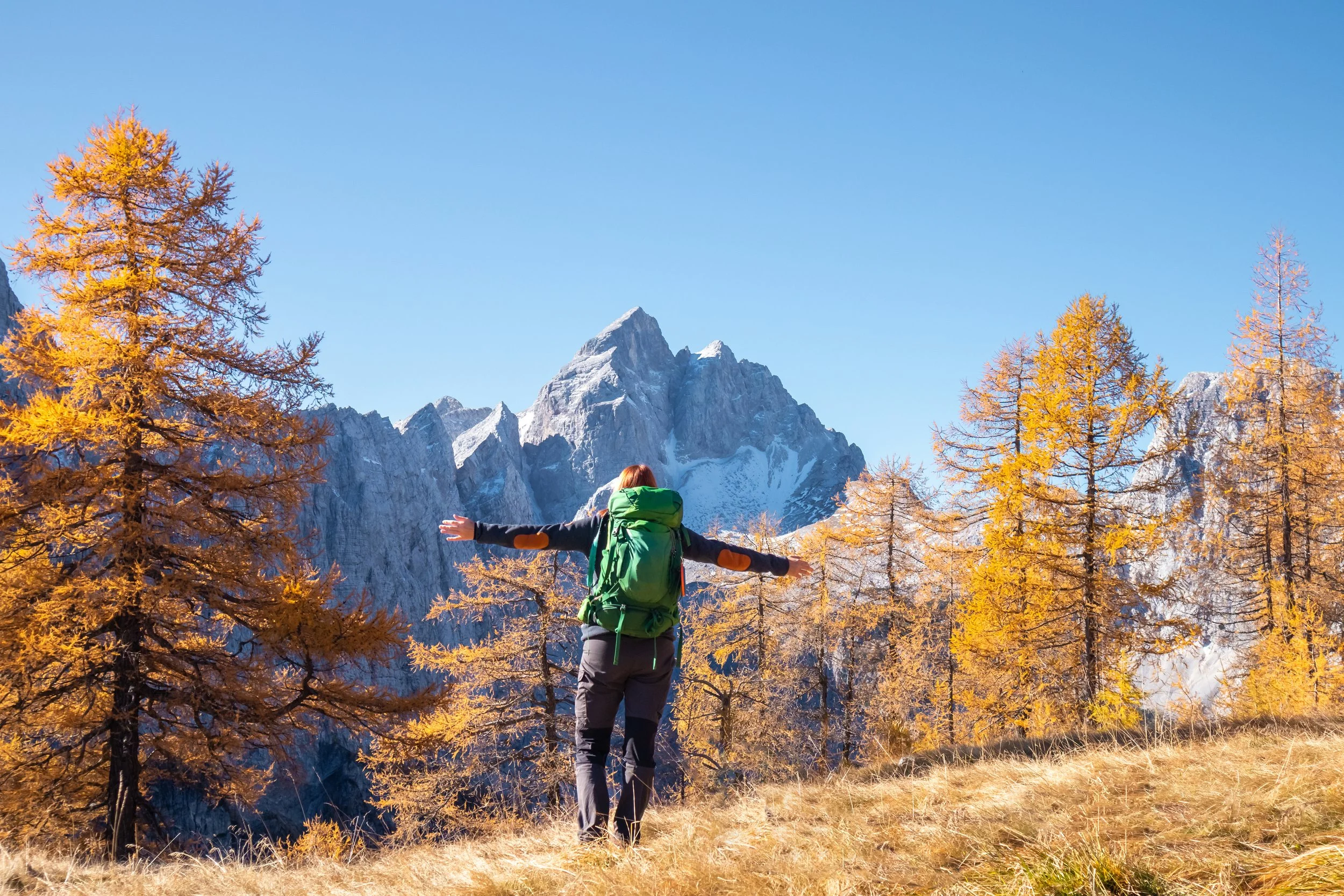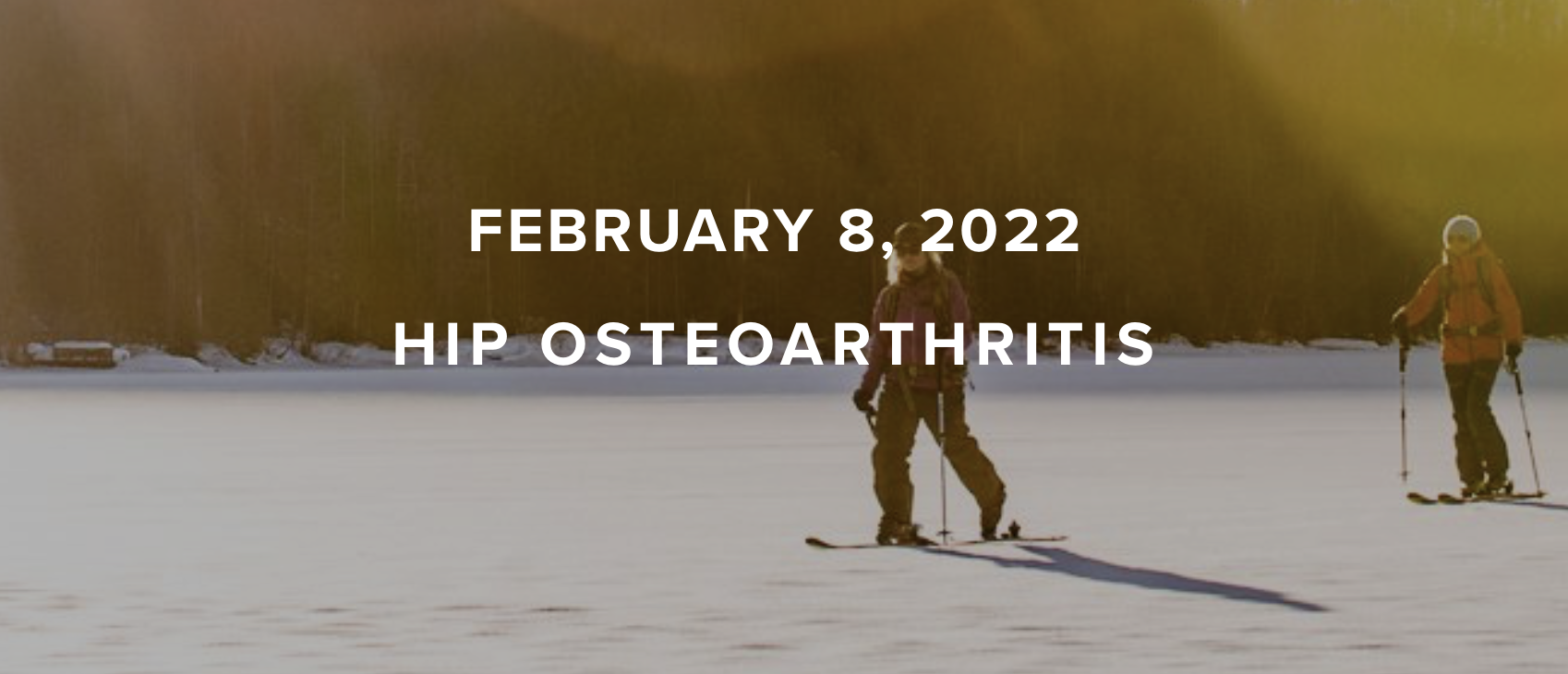The March for Larch!
Photo credit: Joshua Stern
Hiking is high on the list of PNW pastimes. It’s a great excuse to explore the mountains and enjoy every bit of the natural beauty that Washington State has to offer. Peak hiking season in Washington tends to run from late Spring through summer, as the snow melts and the temperatures get warmer. However my personal favorite is a short window of a few weeks in early Autumn– larch season. Larches are a variety of trees that may at first glance resemble a typical pine, but larches do not stay green year-round. Unlike their evergreen neighbors, larch tree needles turn a beautiful golden yellow color in the early fall. For two to three weeks at the end of September until the first snows in October, the Pacific Northwest is blessed with beautiful variation in the forests as those golden yellow pine trees reach peak color. It’s a short window before the trees begin to lose their pine needles as temperatures drop, so you don’t want to miss out on the annual larch madness.
Precautions for Hiking
Hiking can be hazardous, and it’s important to have the right equipment to safely navigate trails. Make sure to pack the Ten Essentials to help you cover all of your bases in case of emergency; this video has details on each category of items to help you safely wander as a wilderness explorer.
Common Hiking Injuries
Due to the nature of walking on uneven and loose surfaces and increased chance of tripping over roots and rocks, we tend to see a good number of ankle sprains among our hiker patients. Athletic tape can be a good component in the first aid portion of your Ten Essentials, as long as you know how to use it. This video is a good resource on how to properly tape and stabilize your ankle.
Here are other helpful tips and advice on how to manage an ankle sprain:
““When you think you have a foot or ankle injury it is a great idea to be checked out by a PT or foot and ankle specialist. They will know the logical next steps.””
PRICE (Protect, Rest, Ice, Compression, Elevation): These guidelines limit excessive stress onto the foot after an ankle sprain.
Protect: Protect the foot by limiting any activities that put a lot of force or pressure on it.
Note: crutches can be a good short-term fix, but if the pain is too intense to walk on then consider getting an x-ray to rule out any more serious involvement like a fracture.
Rest: Take it easy! Taking a few days off of activity can save you unnecessary added time to your recovery journey.
Ice: Ice helps with swelling and pain management. Apply an ice pack or bag of ice to the area for about 20 minutes. For a more localized treatment, you can take an ice cube and gently massage the area for 4 minutes.
Compression and Elevation: These two parts work together to help with swelling management. Compress your ankle with a compression sleeve or wrap your foot with an ace bandage. Elevate your foot on some pillows while laying down and make sure your foot is positioned above the level of your heart.
Ankle circles / alphabets and gentle active movement: It is important to maintain and regain your range of motion after an injury. You can achieve this by tracing out circles and alphabets with your foot in the air, within pain-free range. Your range will increase as the initial pain becomes more tolerable. Note that moving into extreme stretching that causes intense pain can actually be counterproductive when trying to regain your range of motion.
Balance training: After an ankle sprain, you can start with some basic exercises such as a single leg stand to help get your body used to putting weight onto foot again. Once the foot has had some time to heal, you can work with a physical therapist on more advanced balance training to help reduce the chance of re-injury.
““Fall Hiking is preparing for good deep back-country skiing” ”
Larches occupy higher elevations in the Cascades– see here– and with mountainous hikes come steep descents. With steep descents on those hiking trails, hikers will often develop patellofemoral pain syndrome (PFPS), otherwise known as runner’s knee. This kind of pain can be characterized as dull or achy pain that is located in the front of your knee. Other activities that cause this type of pain are descending stairs, squats, or lunges. For more information on PFPS, check out this blog written by Katie Hutchins, PT, DPT. One way to address PFPS is to incorporate exercises that involve eccentric loading. Eccentric strengthening exercises focus on muscle contraction while the muscle is lengthening, which is what happens with your quad muscle when walking downhill. If you don’t have sufficient strength to support yourself for these steep descents, you are more likely to develop PFPS. Come into your local physical therapy clinic to discuss exercise options to limit this from happening or help you recover from this type of injury. Once you’re back to 100%-- we’ll see you out there on the trails. Happy larch-marching!
““Make sure to get the rehab you need to prevent losing hiking or ski season. It is a magical time of the year.””
What can physical therapy do for you?
Balance training alone isn’t going to prevent injuries. Working with a physical therapist to help develop an exercise program that focuses on important aspects– single leg strengthening, speed and coordination, and jump/landing training– will make for a well rounded rehabilitation program that helps decrease the risk of injury and allows you to keep participating in activities you love to do.
AUTHOR:
Hork Do, PT, DPT
LWPT Redmond Physical Therapist
CONTRIBUTORS:
Ben Wobker, PT, MSPT, CSCS, CFSC, SFMA
Founder & Director Lake Washington Physical Therapy
Dr. Jonathan Hall, MD
Orthopedic Surgeon
Dr. Ghislaine Robert, MD
Sports Medicine Physician
Dr. Dayne Mickelson, MD
Orthopedic Surgeon
Dr. Troy Henning, DO
Swedish Sports & Spine
Dr. Christopher Boone, MD
Orthopedic Surgeon
MORE BLOGS
MORE WEBINARS
References
Patellofemoral Pain Syndrome. Mayo Clinic. 2018. Web. https://www.mayoclinic.org/diseases-conditions/patellofemoral-pain-syndrome/symptoms-causes/syc-20350792
Hody S, Croisier JL, Bury T, Rogister B, Leprince P. Eccentric Muscle Contractions: Risks and Benefits. Front Physiol. 2019 May 3;10:536. doi: 10.3389/fphys.2019.00536. PMID: 31130877; PMCID: PMC6510035.
Why do Larches Turn Yellow?: Rocky Mountain Research Station. Why do larches turn yellow? | Rocky Mountain Research Station. https://www.fs.usda.gov/rmrs/why-do-larches-turn-yellow. Accessed July 26, 2022.
Lang FA. Western larch. The Oregon Encyclopedia. https://www.oregonencyclopedia.org/articles/western_larch/#.YuAsrXbMI2x. Accessed July 26, 2022.










